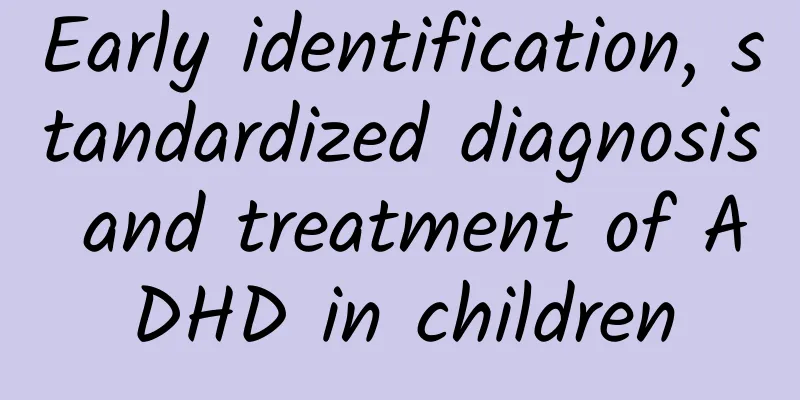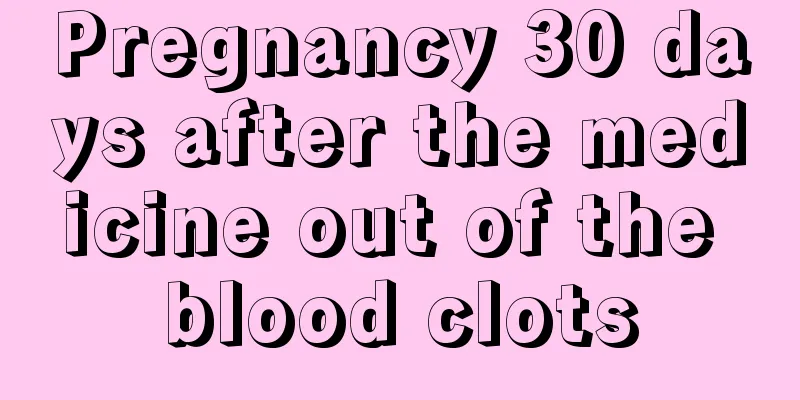Early identification, standardized diagnosis and treatment of ADHD in children

|
1. What is Attention Deficit Hyperactivity Disorder (ADHD)? Attention deficit hyperactivity disorder (ADHD) is a common chronic neurodevelopmental disorder that begins in childhood and lasts into adulthood. Its main characteristics are attention deficit and/or hyperactivity-impulsivity that are disproportionate to the developmental level. ADHD not only impairs learning functions, but also causes damage in many other aspects that involve the entire life cycle. 2. Early identification of ADHD Children with high-risk factors should be monitored and identified early, and early detection and diagnosis should be achieved based on their age and course of disease. Key monitoring groups include: 1. High-risk children with genetic susceptibility: siblings, parents or other relatives with ADHD. 2. High-risk children with environmental susceptibility: (1) Direct and indirect exposure of the mother to smoking, drinking, infection, poisoning, malnutrition, medication, prenatal stress during pregnancy and the perinatal period, fetal intrauterine distress, brain damage at birth, birth asphyxia, low birth weight, etc. (2) Environmental exposure such as lead exposure and bisphenol A. (3) Long-term consumption of a Western diet rich in processed meat, pizza, snacks, animal fats, hydrogenated fats, and salt. (4) Poor parent-child relationship, unstable parental emotions, and inappropriate parenting methods (such as negativity, pickyness, and harshness). So what are the symptom clues of attention deficit hyperactivity disorder at different age stages? 3. Standardized diagnosis of ADHD 1. Clinical assessment of ADHD Screening and evaluation should be initiated as early as possible for children aged 4-18 years who have academic or behavioral problems and symptoms of attention deficit, hyperactivity or impulsivity. Screening scales or diagnostic tools can be used for evaluation before diagnosis and treatment. After treatment, efficacy evaluation questionnaires, adverse reaction questionnaires, etc. can be used for evaluation. 2. Diagnosis and differential diagnosis of ADHD 1. Medical history collection: maternal pregnancy and perinatal conditions, growth and development history, medical history, environment and genetic disease history. 2. Assess family or parenting style: physical and psychological conditions of family members, family functions and environment, and parenting style of the guardian. 3. Assess functional impairment: report cards, homework, and relationships with peers, teachers, and parents. 4. Assess comorbidities: neurological and psychiatric disorders, developmental disorders, and physical illnesses. 5. Physical examination: neurological examination, presence of special facial features, deformities, routine physical examination (including physical measurements, blood pressure, heart rate) 6. Further medical testing and evaluation: laboratory testing, genetic testing, electroencephalogram and neuroimaging, behavioral testing and evaluation, cognitive function testing, and language assessment. 7. Diagnosis and differential diagnosis: diagnosis (classification, severity), differential diagnosis. 4. Standardized treatment of ADHD (I) Key points of ADHD treatment: Set treatment goals and develop long-term treatment plans based on general principles and individual conditions, conduct regular follow-up and evaluation, monitor treatment effects and adverse reactions, and manage according to chronic disease management strategies. (II) Treatment principles for ADHD: Non-drug treatment is the first choice for children with ADHD aged 4-6 years old. After the age of 6, a comprehensive treatment combining drug and non-drug treatment is used to help children achieve the best therapeutic effect with a lower medication dose. 3. Treatment options for ADHD: 1. Non-drug treatment: including psychological education, psychological behavioral therapy, special education and functional training, and medical psychology treatment, parent training and school intervention around these aspects. 2. Drug treatment: ADHD treatment drugs are mainly central nervous system stimulants and non-central nervous system stimulants. Pay attention to gradually increasing the dose to reach the optimal dose. In principle, drug treatment is not recommended for children under 6 years old. It is only recommended to carefully choose drug treatment when the symptoms cause significant adverse effects in many aspects. (1) Central nervous system stimulants Currently, my country only has methylphenidate preparations, which are the first-line treatment drugs. (A prescription is required) (2) Non-central nervous system stimulants Selective norepinephrine reuptake inhibitors, such as atomoxetine hydrochloride, are also first-line treatments. α2 adrenergic receptor agonists include clonidine, guanfacine, etc. 3. Monitoring and follow-up: In addition, antidepressants, antipsychotics, etc. can be selected as auxiliary treatments according to the condition. During treatment, in addition to follow-up of the efficacy, it is also necessary to follow up on adverse drug reactions, regularly monitor physical growth indicators, heart rate, blood pressure, etc. If the symptoms are completely relieved for more than 1 year, you can consider reducing the dosage or stopping the drug. 4. Refer when necessary. References: [1]Pediatric expert consensus on early identification, standardized diagnosis and treatment of attention deficit hyperactivity disorder[J]. Chinese Journal of Pediatrics, 2020, 58(03):188-193. |
<<: How much do you know about the adverse reactions of antihypertensive drugs?
Recommend
What causes bleeding gums after childbirth?
The confinement period is the golden time for a m...
Where does a snail go when it turns into an empty shell? Do snails hibernate? Why?
Snails are animals that belong to many different ...
What should pregnant women do if they get angry during the seventh month of pregnancy?
Women are most likely to get angry during the sec...
Night Listening | Konjac, as a weight loss tool, is really not a "tax on IQ"!
Konjac has long been known as a perfect weight lo...
Will I have abdominal pain when I'm pregnant?
The early stages of pregnancy are more sensitive ...
What are the tests for after induced labor?
As we all know, induced abortion is a common way ...
Can women eat American ginseng?
American ginseng is the preferred choice of many ...
There are three reasons why girls suffer from insomnia
Girls suffer from insomnia more often than boys, ...
What can women eat to gain weight
Now many people are paying attention to how to lo...
I was pregnant after two months of amenorrhea
Everyone has a different understanding about preg...
Why does the ovary fail prematurely? Six reasons are the key
In real life, more and more female friends are su...
Pregnancy sudden dizziness and black eyes
Although pregnant women are prone to dizziness du...
Can the new coronavirus be disinfected with alcohol? What kind of alcohol is best for disinfecting the new coronavirus?
We all know that the new coronavirus is a more di...
What happens if you drink motherwort while pregnant?
Eat motherwort granules in early pregnancy. The e...









